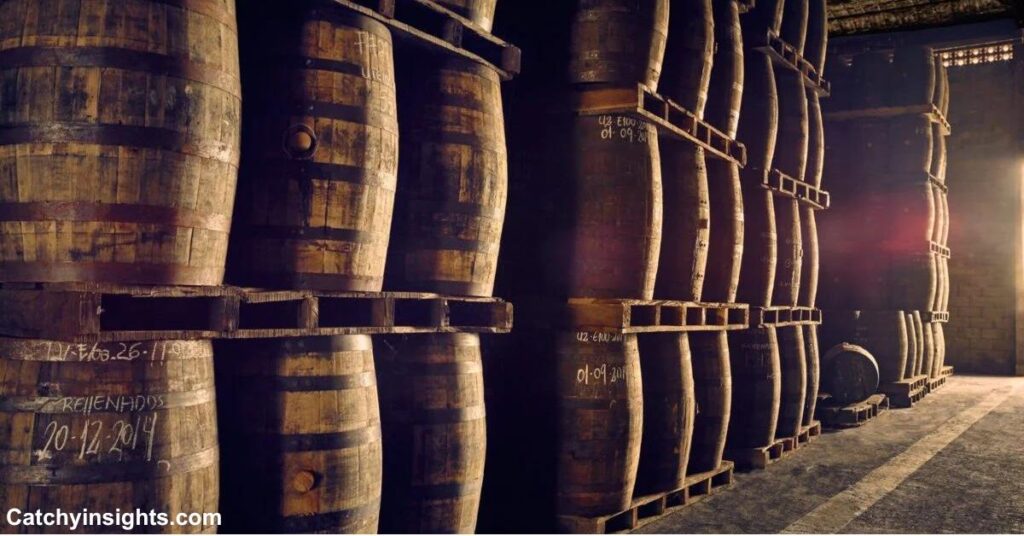Whiskey, a word conjuring up images of relaxation, heritage, and craftsmanship, has long stood as a testament to distillation. Its making process is steeped in tradition and precision, making it one of the world’s most respected and complex spirits. The depth of this spirit is matched only by the depth of appreciation among its patrons. Delving into the art of whiskey distillation enriches one’s understanding and enhances the enjoyment of each sip. For those passionate about exploring the varied aromas and tastes of whiskey, becoming familiar with diverse whiskey brands can deepen your appreciation for this storied drink.
Key Takeaways:
- Uncovering the time-honored techniques of whiskey distillation.
- An appreciation for regional influences in whiskey production.
- The transformative effects of aging on whiskey’s flavor profile.
- The emergence and impact of craft distilleries on the market.
- Guidance for tasting and recognizing quality in whiskey.
- Insights into sustainable practices in whiskey production.
- The joy and particulars of starting a whiskey collection.
Whiskey Distillation: A Blend of Science and Artistry
The distillation of whiskey is an intricate dance between art and science, where temperature, timing, and technical skill must align perfectly to yield the desired spirit. Quality ingredients form the basis of the process, with different grains imparting unique flavors. The craft distiller pays vigilant attention to the fermentation stage, where the yeasts play a vital role in shaping the initial alcoholic liquid that will eventually be distilled. The type of still, whether a traditional pot or modern column, and how it is operated, can significantly influence the complexity and smoothness of the final product. A master distiller’s expertise is their ability to harness these variables, ensuring that each batch of whiskey is a tribute to the spirit’s rich legacy.
Regional Flavors and Traditions

Whiskey is a spirit tethered to its locale, with each world region imprinting its unique stamp on the distilling process. The rugged terrain of Scotland yields the distinct smokiness of Scotch, while the rich, fertile fields of the United States give us the sweetness of corn-based Bourbon. Irish whiskeys, renowned for their smooth texture, benefit from the country’s pure water and traditional pot stills. Canadian, Japanese, and other global whiskey producers also contribute their interpretations of this classic spirit, each shaped by the interplay of climate, culture, and local laws, yielding a world of flavors for enthusiasts to explore and savor.
The Impact of Aging
Aging is when whiskey truly comes of age. This prolonged rest period in barrels allows it to slowly extract flavors and take on the character of its wooden container. Factors such as the type of wood, the size and age of the barrel, and even the environment in which the barrels are stored contribute to the taste. Over time, chemical reactions occur between the whiskey and the wood, resulting in complex flavors like vanilla, caramel, and oak. It’s a reminder that patience is a virtue when distilling whiskey, as these transformative years spent in barrels can define a whiskey’s final character.
The Renaissance of Craft Distilleries
The recent resurgence of craft whiskey distilleries has brought innovation and a personal touch into the limelight. These small-scale operations prioritize quality over quantity, often experimenting with local ingredients, unconventional grains, and novel distillation methods. Craft distilleries tend to produce whiskies that challenge traditional conventions, offering unique flavor notes and reinventing what whiskey can be. This movement has reinvigorated the industry and invited a new generation of drinkers to discover and celebrate the diversity within the world of whiskey.
Tasting and Appreciating Whiskey
To truly appreciate whiskey is to understand its language—a plethora of aromas, flavors, and textures that tell the story of its creation. Tasting whiskey is an exercise in mindfulness; carefully sipping reveals the spirit’s journey, from the grain fields to the distillery to the aging barrel. A nuanced palate can distinguish the subtleties of the spirit, recognizing the influence of the mash bill, fermentation, and maturation. By learning the nuances of tasting, one gains enjoyment and a profound respect for the distiller’s craft.
Eco-Friendly Whiskey Production

As the world becomes increasingly ecologically aware, so does the whiskey industry. Sustainable practices are integrated into every production stage—from sourcing ingredients to energy consumption during distillation. Modern distilleries are taking strides to reduce waste and water usage, engage in responsible sourcing, and explore alternative energy sources. These eco-conscious methods preserve our natural resources and ensure that the whiskey industry will continue to thrive for future generations to enjoy.
Collecting Whiskey
Whiskey collecting isn’t just about acquisition; it’s about curating a personal narrative through bottles with stories to tell. Collectors immerse themselves in each whiskey’s history, scarcity, and craftsmanship, whether it’s a limited edition release or a bottle from a notable distillery’s golden era. The hobby’s rewards are manifold, from the pleasure of the chase to the potential increase in value over time, making it a fulfilling endeavor for both novices and seasoned enthusiasts.
Whiskey in Gastronomy
Whiskey’s influence extends beyond the bottle and into the kitchen. Its flavors can complement a gourmet meal or add complexity to a cocktail. The culinary integration of whiskey offers an additional dimension for exploration, from infusing it into sauces to using it as a secret ingredient in desserts. Whether sipped neat or mixed into a concoction, whiskey remains a celebrated guest on tables and bars worldwide, thanks to its robust character and versatility.
There is a profound beauty in the art of making whiskey—a process that respects the past while embracing the future. It is a craft that continues to evolve, with each distiller adding to the rich tapestry of its history. For those who take the time to explore whiskey’s many facets, the rewards are as deep and varied as the spirit. Whether you savor the final product or explore the history uncovered in each bottle, there’s no denying that whiskey represents a confluence of craftsmanship, culture, and complexity.

